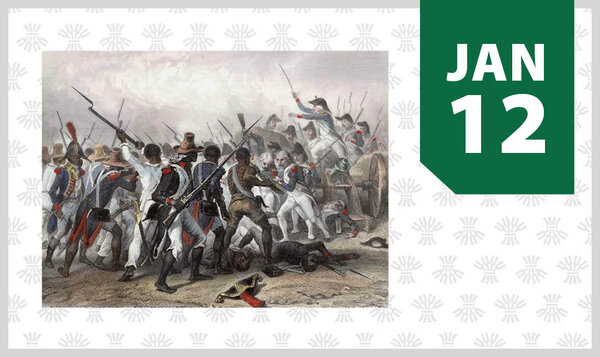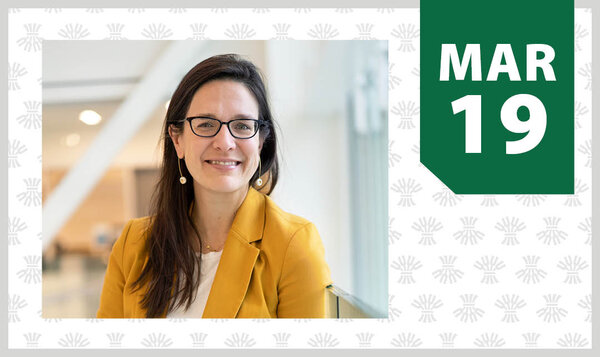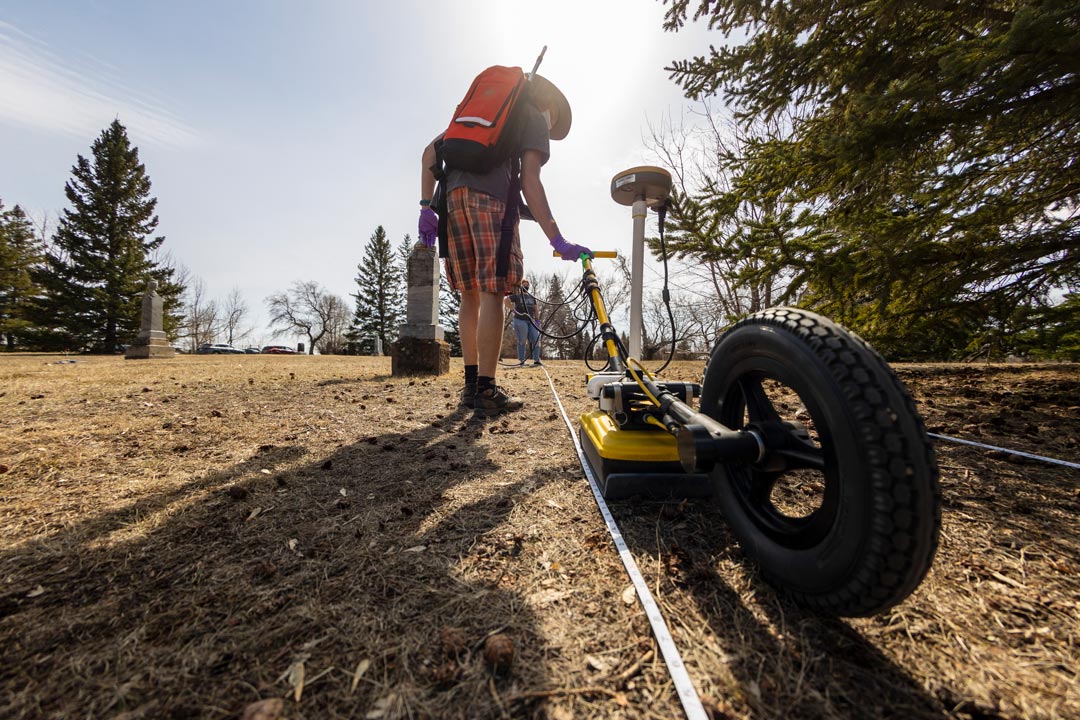
USask archaeologists recognized for advice, advocacy on residential school graves searches
Canadian Archaeological Association working group has won a Governor General’s Innovation Award
By Chris Putnam
Three archaeologists affiliated with the University of Saskatchewan (USask) are receiving national recognition for contributions to the ongoing search for missing children and unmarked burials at former residential school sites.
The Canadian Archaeological Association Working Group on Unmarked Graves (CAAWGUG) is one of six 2024 recipients of the Governor General’s Innovation Award, which honours innovators who positively impact the lives of Canadians.
The 15-member working group is made up of scholars from across Canada, including USask associate professor of anthropology Dr. Terence Clark (PhD), USask archaeology graduate and current master’s student Micaela Champagne (BSc’22), and USask archaeology graduate Joshua Murphy (MA’22).
“Thousands of Indigenous children across the country were forced from their homes to attend abusive schools and many never came home. Their families and communities want answers. The Working Group on Unmarked Graves is using all our abilities to help find those answers,” said Clark, who helped found the working group in 2021.
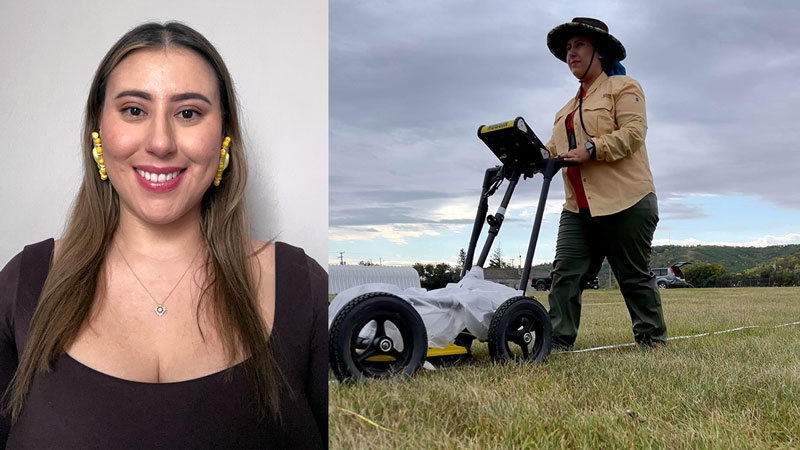
“Indigenous people have always known the existence of these missing children, but this organization and these practices are a tangible way for non-Indigenous Canadians to see the impact of residential schools,” said Champagne, a Métis/Cree archaeologist and the granddaughter of a residential school survivor. “I wanted to make sure that these stories that our truth-tellers and our survivors have been telling us for years were really going to be heard by the wider public.”
CAAWGUG was chosen for the award based on its work offering advice to Indigenous communities, acting as advocates for residential school survivors, conducting ground searches, and proposing consistent standards for the methods used to search for unmarked graves.
The group has developed resources for Indigenous communities considering investigating unmarked graves and provided advice and training to communities looking to conduct their own searches.
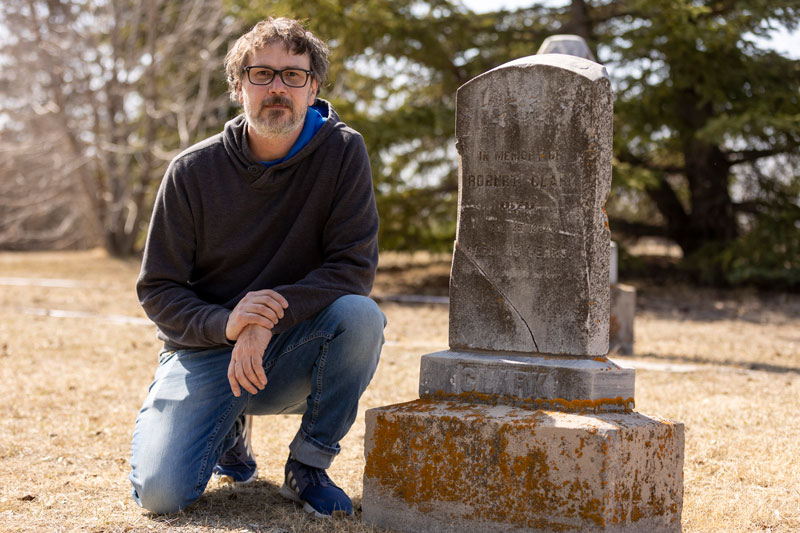
For years before CAAWGUG was founded, the USask archaeologists and other working group members had been involved in searches for unmarked graves at residential school sites, always at the invitation of survivor communities.
That leadership from the communities is crucial, said Champagne.
“What I really wanted to do was to make sure that we’re doing these searches in a good way, where it’s survivor- and community-led. And that’s what the working group is really about, is making sure that survivors and communities are leading these ground searches to find their missing relatives.”
When word came out in 2021 of more than 200 burial sites discovered at a former residential school at Tk'emlups te Secwépemc First Nation, B.C., the search for graves became national news. Many other Indigenous communities began investigations into their children’s lost graves, and private companies with little or no experience with such searches were eager to offer their services.
Clark and other archaeologists saw a need to establish standards and guidelines for searches, and the working group was formed. Champagne and Murphy, both graduate students supervised by Clark in the USask Department of Anthropology, joined later.
Following scientific standards ensures that communities can be confident in the findings of their searches, but Clark also believes it’s important to explain the limitations of current search technologies. Ground-penetrating radar, for example, works best on ground that has been undisturbed since the original burial, and can only indicate the likely presence of a grave rather than absolute confirmation.
The goal of the searches has never been to verify the existence of children’s graves—which are well-documented through survivor testimonies—but to help communities find closure.
“What we're doing is trying to find where these children are—as best we can with the technology that's available—so that they can make decisions about what comes next,” said Clark.
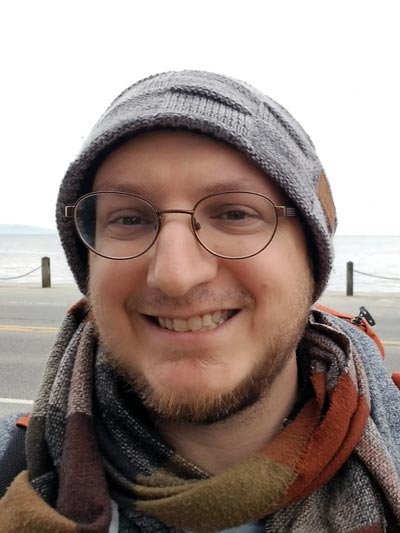
The chance to bring real benefits to partner communities through archaeological research is what motivates Murphy, who is currently a PhD student at Simon Fraser University.
“Hearing firsthand from residential school survivors and their families that our work is meaningful to them and is helping them to heal is incredibly fulfilling and it makes me know that we are doing something good,” Murphy said.
Clark hopes that the Governor General’s Innovation Award will bring more visibility to the resources offered by CAAWGUG and will help persuade governments and institutions to do more to support the important work of searching for unmarked graves.
“I don’t want the country to forget about this. These searches will be going on for years; many survivor communities and schools haven’t even started yet. Moving forward, there's going to be a need to continue this research, to continue support for communities,” said Clark.
